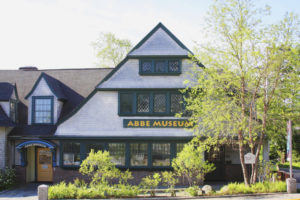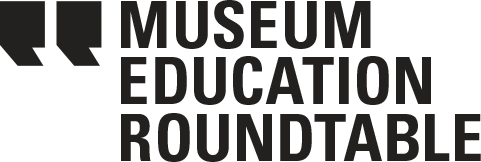Looking Inward: Addressing colonialism and racism in museum origin stories and collections (Part 1)
For its April, 2018 issue on Race, National Geographic opened the issue with an unusually explicit editorial, titled, “For Decades, Our Coverage Was Racist. To Rise Above Our Past, We Must Acknowledge It.” As part of this reckoning, they asked historian, John Edward Mason to review their archives and report on how their over a century-old organization has represented people of color and non-western cultures, and shaped popular imagination around race throughout the 20th century. Unsurprisingly, he found decades of imagery and curatorial choices that constructed non-western, non-white others for consumption by American readers. Many American museums and historical societies were founded in the same era as National Geographic, and have collections and legacies shaped by colonialism and white supremacy, whose legacies we all must reckon with. We asked four colleagues who are tackling this work with different strategies for different contexts to share their processes. Over the next month we’ll be sharing their responses in this two-part blog series, Looking Inward. Today’s post focuses on their vision and strategies. The next post in two weeks will get into the nitty gritty of logistics and making the work happen.
THE RESPONDENTS
Cinnamon Catlin-Legutko, President/CEO, Abbe Museum
Joe Horse Capture, Director of American Indian Initiatives, Minnesota Historical Society
Guido Gryseels, Director General, Royal Museum for Central Africa (also known as The AfricaMuseum)
Ashley Rogers, Director of Museum Operations, Whitney Plantation
PART ONE
What steps has your museum taken to proactively discuss and highlight its relationship to histories of colonialism and racism?

Guido Gryseels: The Royal Museum for Central Africa in Tervuren, Belgium, served as a colonial museum until 1960, year of the Independence of DR Congo. About 15 years ago, the RMCA engaged in a major renovation process which involved a major shift in vision and culture of the institute. The AfricaMuseum considers colonialism as an immoral system of governance in which other countries are occupied with military force and where a governmental system is introduced based on racism, violence and exploitation of resources to the benefit of the colonizing country. The renovation of our museum involved a complete overhaul of our permanent exhibition to replace it by an exhibition on contemporary themes of today’s Africa and a critical approach of the colonial past. The renovated museum also illustrates how its colonial messages that were spread over several decades have contributed to problems of racism and of the multicultural society of today. In developing this new vision, the AfricaMuseum went through several steps. These involved first of all the initiation of a close collaboration with African diaspora and representatives of African cultural and scientific institutes. In a second step, a series of exhibitions were organized on the origin of our collections, the colonial past of DR Congo, and the Independence of the Congo, seen through Congolese eyes. The AfricaMuseum also initiated a large number of educational workshops, conferences, and cultural activities to more closely associate people of African descent in the working of the museum. The renovation process involved not only a decolonization of the museum but also of our mindsets.

Joe Horse Capture: Like many history museums, the Minnesota Historical Society (MNHS) has had some challenges addressing colonialism and racism in their exhibits and programming. Within the past few years, MNHS has been purposefully focusing in this area through programming, staff hires, and the creation of two departments. Although there is still a significant amount of work to do, the creation of the Department of Inclusion & Community Engagement (DICE) and Native American Initiatives (NAI) are great steps in this direction. DICE provides opportunities for MNHS to learn more about the diversity of Minnesota, create training to work with minority groups, created opportunities for people of color to engage with MNHS and its sites, and created fellowships and internships to cultivate a more diverse workforce. NAI works specifically with the tribal groups in Minnesota and the surrounding region to develop relationships that assist MNHS for programming, site development, and partnership opportunities. Furthermore, NAI has two Native groups, the Indian Advisory Committee and the Dakota Community Council that guide MNHS through this process.
Cinnamon Catlin-Legutko: We have a VERY proactive and formal process to develop and share decolonizing museum practices. In late 2012, the Abbe Museum Board of Trustees established a Decolonization Initiative (DCI) and Task Force. The Initiative was an outgrowth of the 2012 Board Annual Retreat, facilitated by Jamie Bissonette Lewey, Abenaki. The Task Force identified three decolonizing practices to guide us.

Decolonizing practices at the Abbe are collaborative with tribal communities. This means that when an idea for a project or initiative is first conceived, we have a conversation with Native advisors and make sure it’s an activity that we have the right to share or pursue. We don’t get halfway down the planning timeline and then check with Native advisors about how we’re doing and if we’re getting it right. Native collaboration needs to be at the beginning and threaded throughout the life of the project. The second characteristic of decolonizing museum practices is to privilege Native perspective and voice. The vast writings on the human experience are, with little exception, written by white academics and observers. When we begin to prioritize the accounts and observations of indigenous scholars and informants, the story broadens, expands, shifts, and brings clearer and non-oppressed perspectives of Native history and culture. Decolonizing museum practice includes the full measure of history, ensuring truth-telling and the inclusion of difficult stories. Histories of Wabanaki people connect to today’s challenges. Issues around water quality, hunting and fishing rights, and mascots are connected to the past and the present. When we present this full history we have a better opportunity to identify harmful statements and practices.
In this new framework, the Abbe Museum is committed to developing decolonizing museum practice that is informed by Wabanaki people and enforced by policies, managed by protocols, and overseen by inclusive governance structures. We will have structures in place that maintain this commitment to decolonization, regardless of the players involved – staff, trustees, and advisors.
Ultimately this framework influenced our current strategic plan, approved in August 2015 (the entire plan may be viewed here). It makes a clear commitment to decolonization. Initially the board and staff thought decolonization would be a “spoke” of the plan, but it became evident after stakeholder meetings and a convening of our Native Advisory Council that decolonization is our vision – the lens we look through to make decisions and set priorities.
Following approval and implementation of the strategic plan, governance focused on decisions and strategies that not only create decolonizing practice but also established a level of permanence that cannot be dismissed easily and turn the organization away from a decolonizing path.
At the core of this process is recognizing where power sits in the museum. During a 2016 board retreat, Jamie, now an Abbe trustee, co-led board and staff in a facilitated discussion she created on power sharing and museums. In two parts, the exercise first asked the question, “Where do museums have power in America?” followed by “What does power sharing look like?” The answers were wide-ranging and startling when viewed as a whole: museums have control of information and objects; they selectively disseminate information; they hold power over stories and interpretation; they determine what is and isn’t “appropriate”; and they hold power over taste and aesthetics. The next steps we generated were motivational and achievable and fuel our work today.
We are happy to provide updates whenever needed and you can check our blog for the latest content. The first big outcome of this recognition and positive action is a change in our governance. By August 2018, we will have parity on our board of trustees between Native and non-Native people and a growing commitment from the Native Advisory Council to pursue joint governance activities.
Lauren Monsein Rhodes, Sarah Sims, and Emily Potter-Ndiaye all serve on the current Board of Directors for the Museum Education Roundtable.

